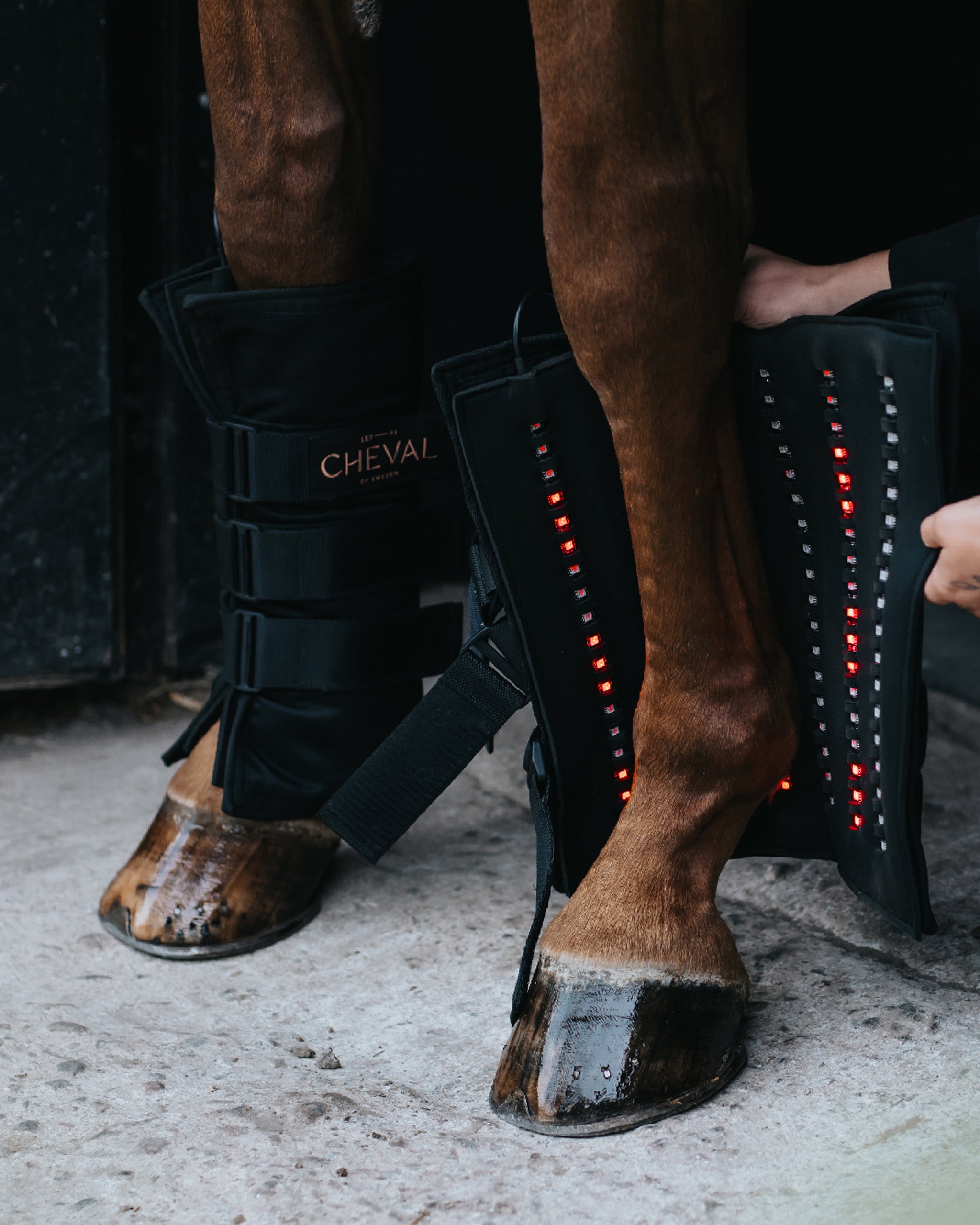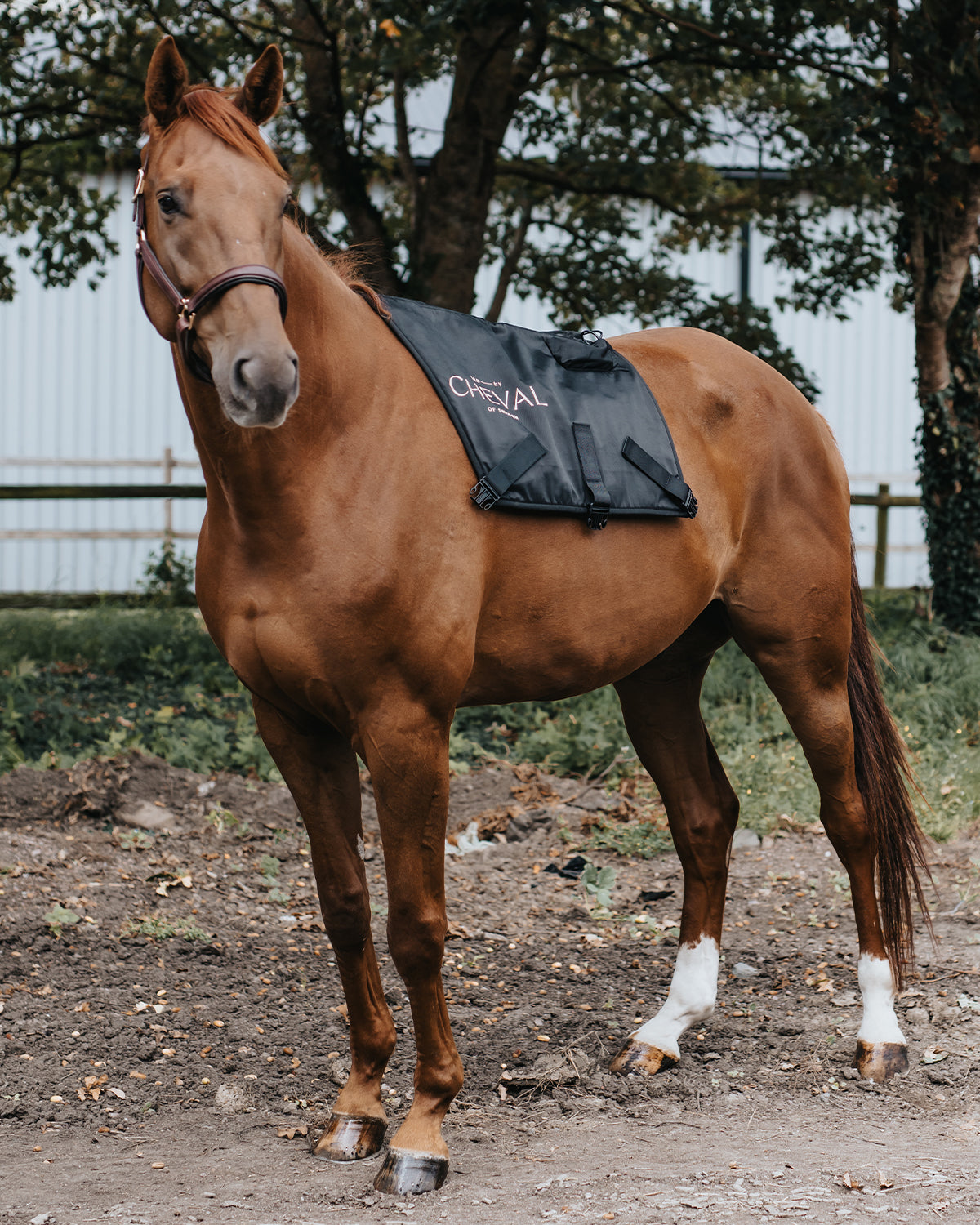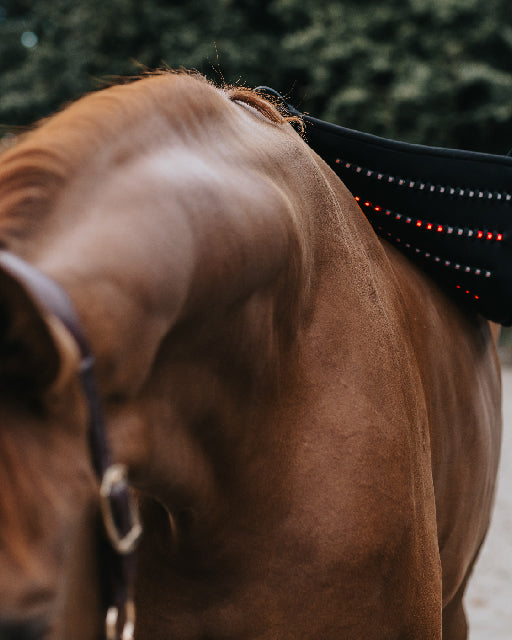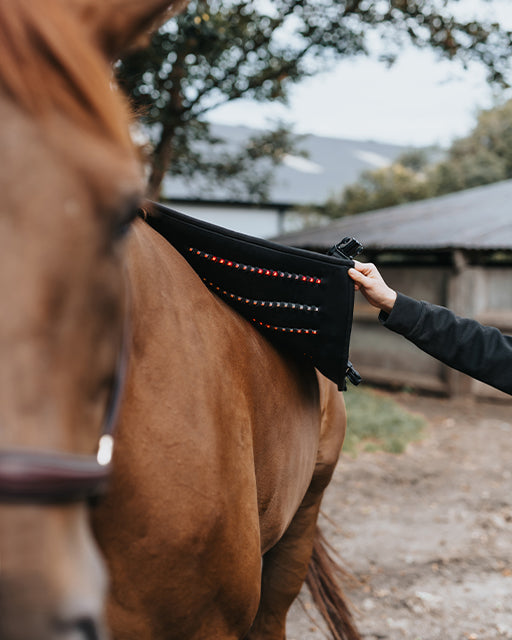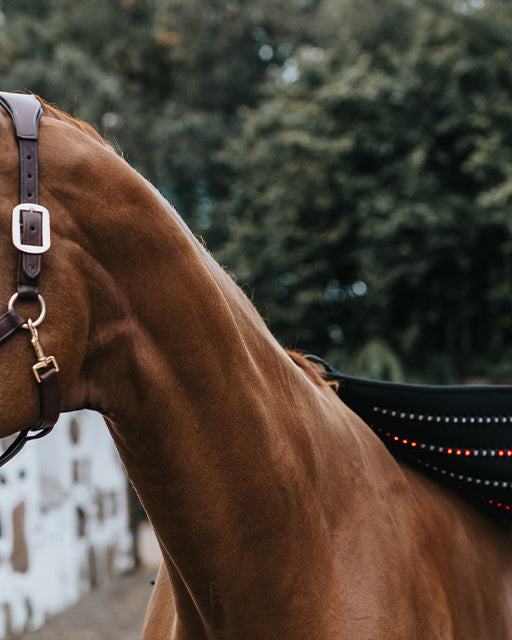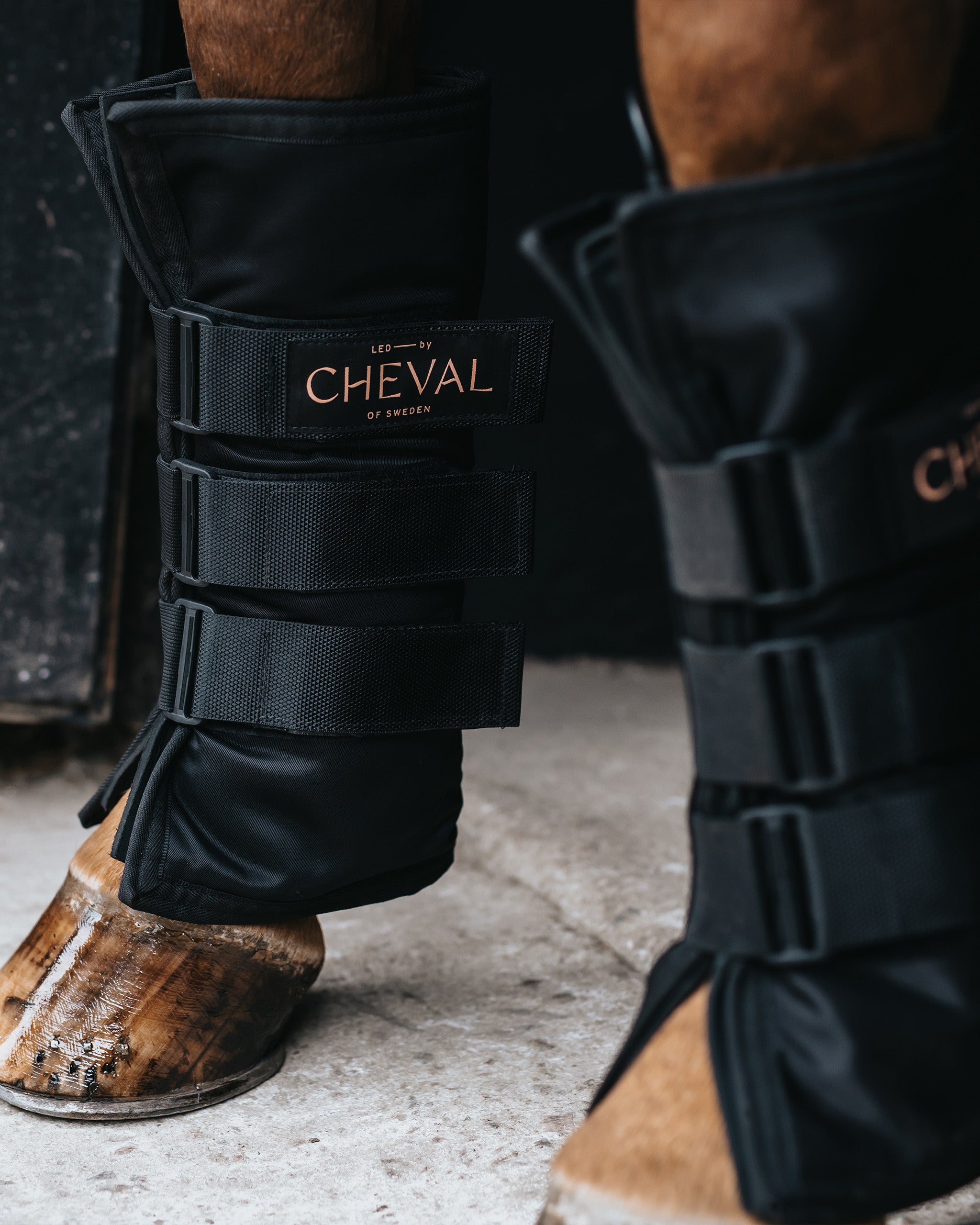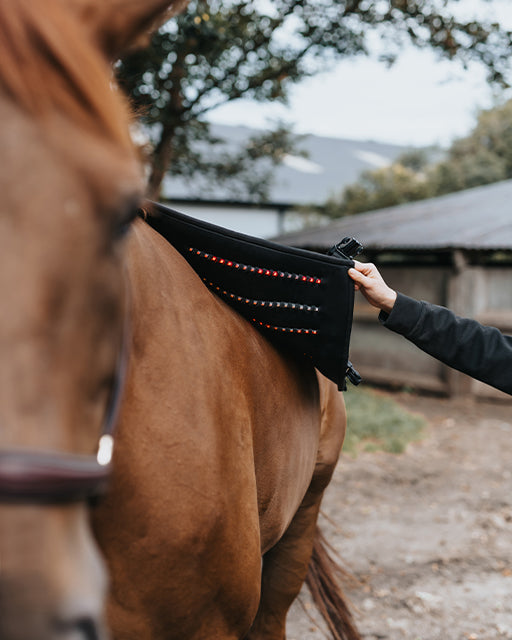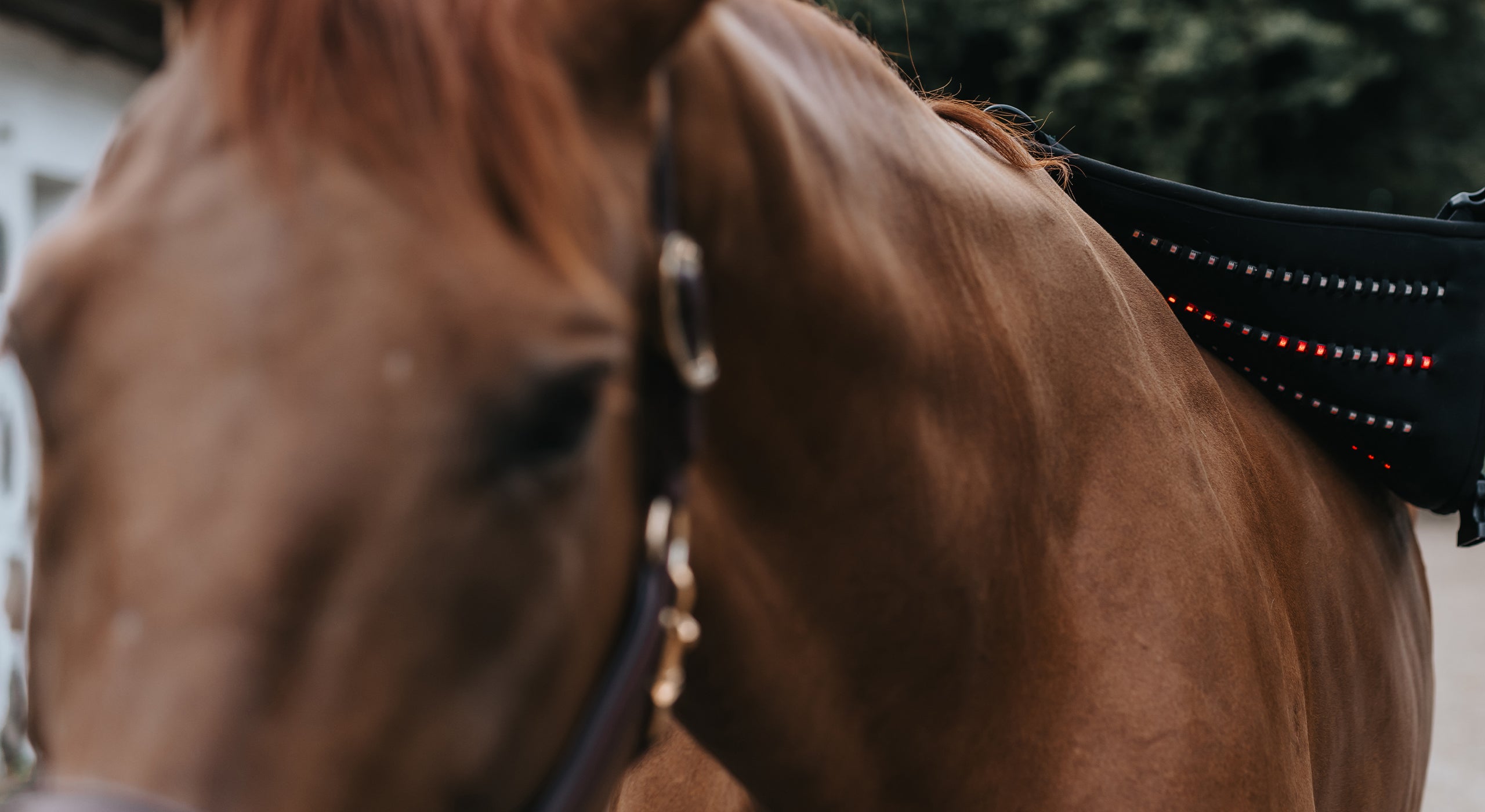LED treatment vs laser for horses
When it comes to light-based care for horses, one of the most common questions is: What is the difference between LED Treatment and laser therapy? Both approaches use red and near-infrared light to support recovery, mobility, and overall well-being, but they differ in how the light is produced, applied, and managed.
Understanding these differences will help you choose the right option for your horse.
Coherent vs non-coherent light
The biggest distinction between LED Treatment and laser lies in the way the light is generated.
- LED Treatment for horses uses non-coherent light. This means the light waves are scattered and not narrowly focused, creating a gentle, diffused beam. The benefit is broad coverage over larger areas such as the back, shoulders, or hindquarters, making it practical for everyday use in equine care.
- Laser therapy for horses produces coherent, collimated light. The beam is more concentrated and can be directed with high precision. While penetration depth depends mainly on the wavelength (not the coherence), lasers can deliver higher energy density into very specific spots. This makes them useful for localized applications, but also requires professional skill to avoid unwanted effects.
Safety and handling
- LED Treatment is generally considered safe, with minimal risk when used according to guidelines. Because the light is diffused, the chance of tissue overheating is very low. This makes LED systems well-suited for regular use by horse owners outside a clinical environment.
- Laser therapy, however, requires more caution. The focused energy can lead to overheating, burns, or eye injury if handled incorrectly. For this reason, laser treatments on horses should always be performed by trained professionals.
Which system is right for your horse?
Both LED and laser systems have their place in equine light therapy:
- If you want a safe, user-friendly solution for broad areas and daily use, LED Treatment is often the better choice.
- If you need precise, high-intensity treatment at specific points, laser therapy may be recommended — but always under professional supervision.
Further reading
If you want to dive deeper into the science, we recommend this review:
Farivar, S., Malekshahabi, T., & Shiari, R. (2014). Biological effects of low level laser therapy. Lasers in Medical Science, 29(2), 597–607. Read the full article on PubMed Central >
This study explains how both laser and LED light interact with biological tissues, clarifying differences in light properties, wavelength effects, and safety considerations — insights that are highly relevant for equine applications.
Read more
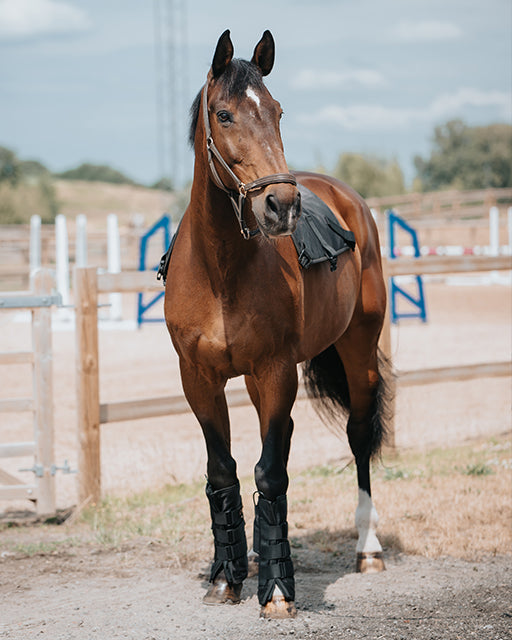
Understanding a horse’s anatomy is essential for effectively applying LED Treatment, as each area contributes uniquely to the horse's movement, balance, and overall well-being. LED by CHEVAL’s adva...
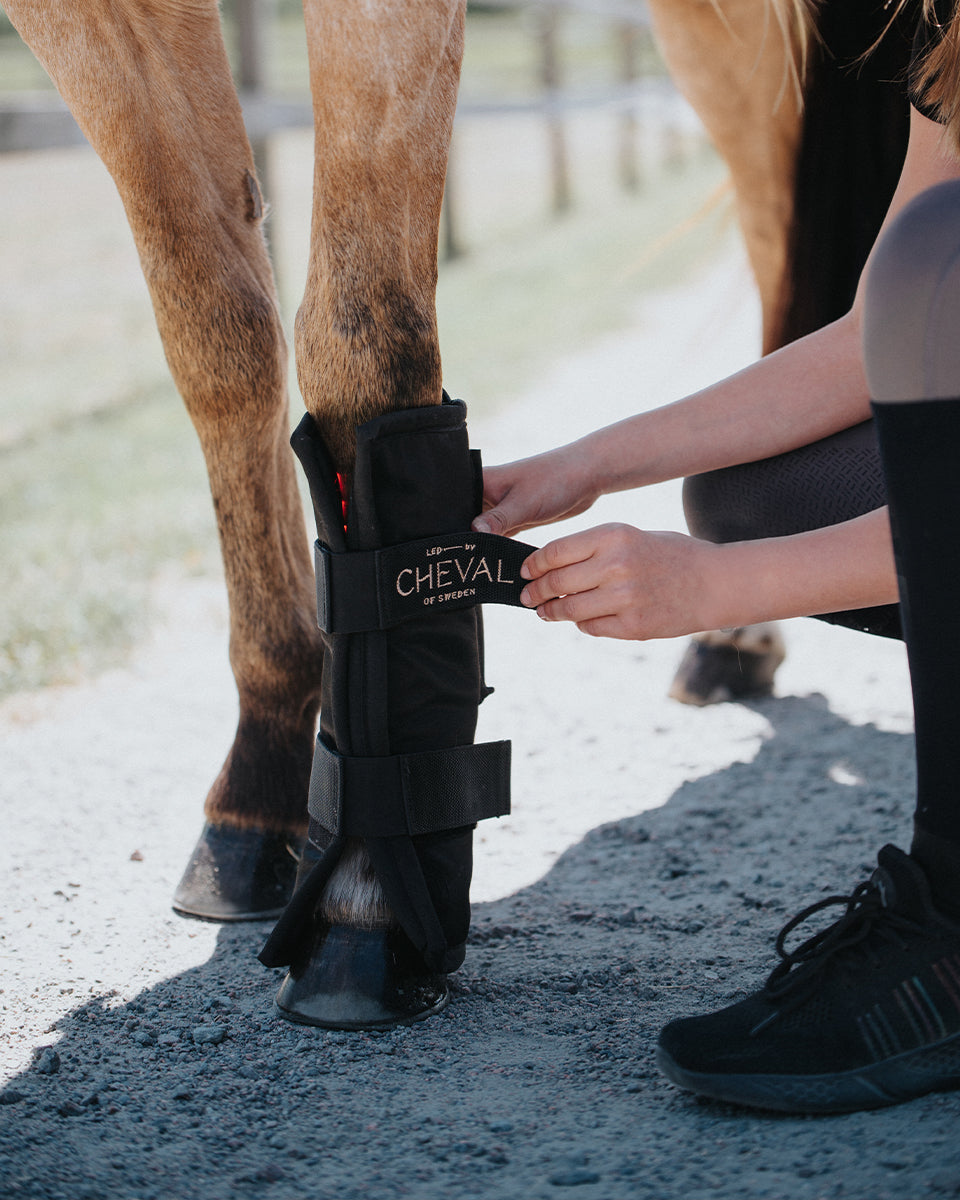
LED Treatment for horse injuries – support recovery with light At LED by CHEVAL, we know that recovery from injuries can be a long and challenging process for horses. That’s why we provide a scient...


